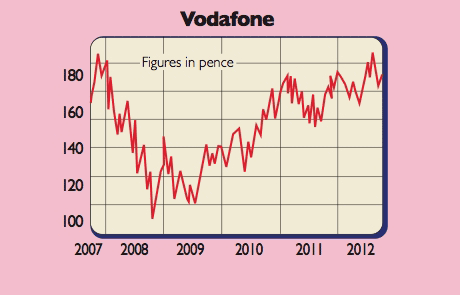How to value dividend-paying shares
With the economy still fragile, high-yielding blue-chips are in hot demand. That can make them expensive. So how can you make sure you're not paying too much? Tim Bennett explains.
With interest rates low and the economy fragile, dividend-paying, blue-chip stocks are in demand. But with yield-hungry investors driving up prices, how can you make sure you don't pay too much?
The Gordon growth model
One simple formula can help you find reliable dividend streams at sensible prices. It's not perfect, but it's a good place to start. The Gordon growth model is named after Myron J Gordon, the American economist and professor of finance at the University of Toronto, who published the basic model in 1959.
At its heart is one key concept: that a share is worth the sum of all the future dividends it will pay. To get your head around this idea, consider the value of your house. In pure economic terms, it is only worth what someone is prepared to rent it for over its expected life (houses eventually fall down, even if you paint and repair them).
MoneyWeek
Subscribe to MoneyWeek today and get your first six magazine issues absolutely FREE

Sign up to Money Morning
Don't miss the latest investment and personal finances news, market analysis, plus money-saving tips with our free twice-daily newsletter
Don't miss the latest investment and personal finances news, market analysis, plus money-saving tips with our free twice-daily newsletter
So ignoring inflation for now if you could get £10,000 a year for ten years before it collapses, the house is in theory worth £100,000 (£10,000 x 10).
In much the same way, the only certain cash return you can expect from a share is a dividend. The share price might rise too, but like the value of your house, it might also go down. So in theory, the value of a share that will pay a dividend of £10,000 for the next ten years is £100,000 today. But this is where we hit several problems that the model tries to solve.
Three key assumptions
Firstly, how do you know you will receive a constant dividend of £10,000 a year for the next ten years? You don't. The model makes an assumption: that you will receive the next dividend forever (or what economists call in perpetuity').
This makes the model best suited to large, steady, dividend-payers, where the next payout can hopefully be forecast with some certainty, rather than fast-growing smaller firms that don't yet pay a dividend, or are at risk of cutting it.
The next problem is, you don't expect a dividend to stay constant you'd hope to see it grow by at least inflation each year. Otherwise, that annual £10,000 will shrink in real (after-inflation) terms. For example, if inflation is 3%, £10,000 received in a year's time is only worth £10,000/1.03, or £9,708 today. So the model builds in an assumed growth rate for dividends.
The third problem is that the assumption that a company will pay you £10,000 a year without fail isn't realistic. Investing in shares is risky. The model tries to take account of this risk it includes the required return for an equity investor. This is the minimum return you should demand for investing in a share when you could invest in something safer, such as a bank account or a government IOU (a gilt in Britain).
It's a tricky number to estimate and involves educated guesswork. One rough and ready way to estimate it is to take the yield on a firm's corporate debt and adjust it for inflation. You should also allow for the fact that, as a shareholder, you expect to be paid last (the advantage of being a bondholder is that you get your interest paid ahead of dividends allocated to shareholders). These are the key ingredients.
So how do you use them to work out what a firm's share price should' be today? First take the next dividend. Then divide it by the difference between the return you require for investing in the company, minus the expected growth rate of its dividends. If the dividend is expected to be £2m, your required return is 8%, and the dividend growth rate is 3%, the expected equity value of the firm is £2m/(0.08-0.03), or £40m.
Let's say the firm has issued ten million shares. That means the expected share price is £4 (£40m/10m). If the firm is trading at £3.50, say, then this suggests the shares are cheap.
Applying the model to Vodafone
Vodafone (LSE: VOD) is the kind of large, well-established stock this model works best for. It has paid out steady dividends for the past five years, without any cuts. The 2013 dividend is expected to be 12.6p, but around 2p is a special' dividend the normal' dividend is more like 10p. For 2011 and 2012 respectively, the dividend was 8.9p, and 9.5p. Averaging the growth for those three years gives a rate of more than 11%.

But Vodafone is unlikely to outgrow the UK economy indefinitely, so a more realistic in perpetuity' growth rate might be inflation of 2% (the Bank of England target) plus a long-term UK GDP growth rate of 2.5% (based on Office for National Statistics data). So that's 4.5%.
What about the required return? Let's start with the yield on Vodafone's 2032 5.9% corporate bond: that's currently 3.9%. Add an inflation estimate of 2.5%, and 3% on top to compensate for the risk of buying stock rather than a corporate bond. That gives a required return of 9.4% (3.9% + 2.5% + 3%). Using the model, the share price for Vodafone should be 10p/(0.094-0.045). That's 204p.
The current price is nearer 178p, so this model suggests it is a little underpriced. Now clearly some of the assumptions used here can be challenged that's partly our point in running you through the working', so that you can adjust them depending on your own views but it's a good starting point for deciding whether a dividend-paying share offers decent value.
Get the latest financial news, insights and expert analysis from our award-winning MoneyWeek team, to help you understand what really matters when it comes to your finances.
Tim graduated with a history degree from Cambridge University in 1989 and, after a year of travelling, joined the financial services firm Ernst and Young in 1990, qualifying as a chartered accountant in 1994.
He then moved into financial markets training, designing and running a variety of courses at graduate level and beyond for a range of organisations including the Securities and Investment Institute and UBS. He joined MoneyWeek in 2007.
-
 The new 4% rule – how much should retirees really draw from their pension in 2026?
The new 4% rule – how much should retirees really draw from their pension in 2026?Brits retiring in 2026 could be withdrawing too much from their pension pots if they stick to an old rule about ‘safe’ limits – with the risk of running out of money in retirement
-
 Leaving it too late to gift inheritances costs some of Britain’s wealthiest families £3m each
Leaving it too late to gift inheritances costs some of Britain’s wealthiest families £3m eachEven average Brits are being landed with huge and unexpected inheritance tax bills because of a little understood rule around gifting, new figures show